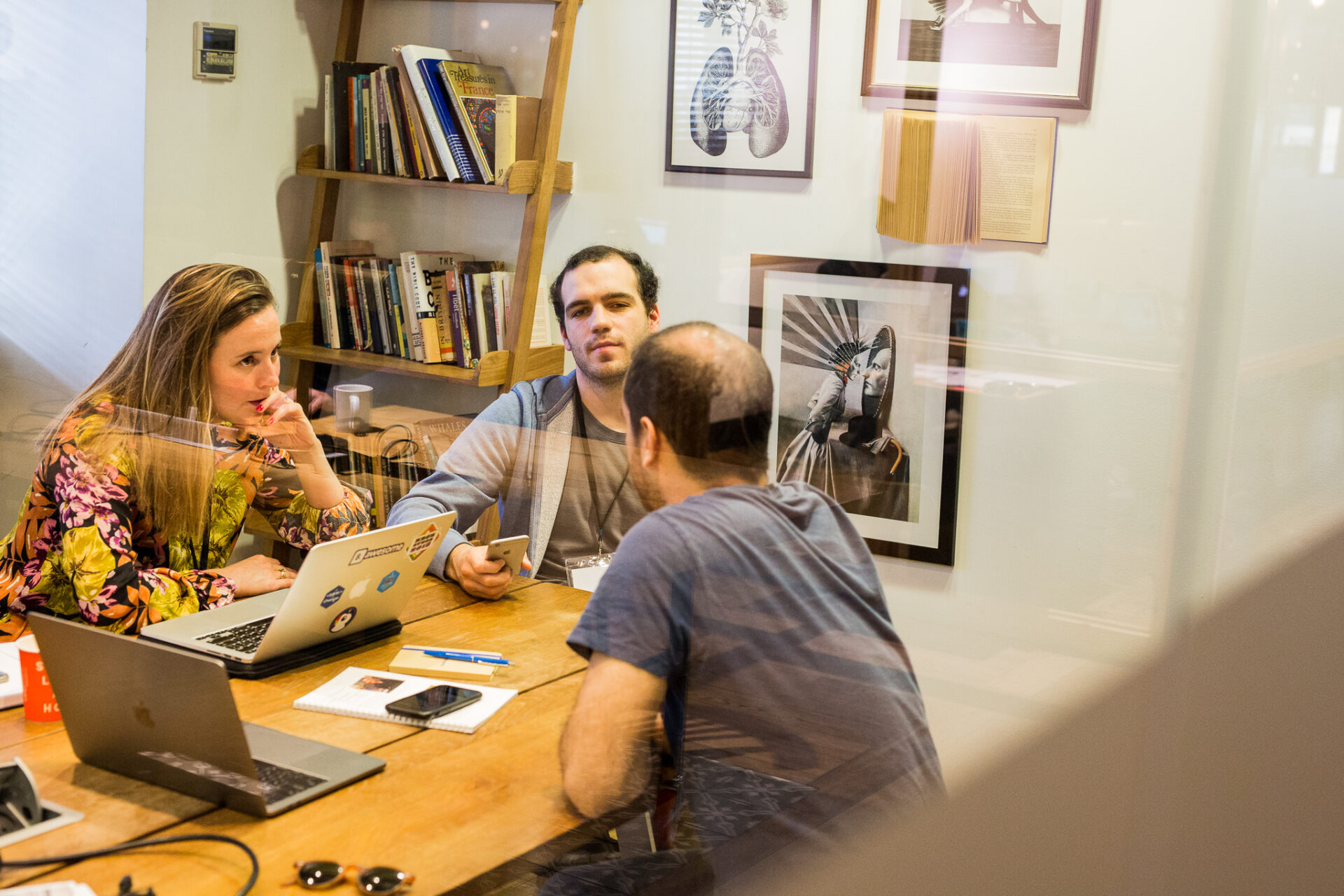
Design sprints have gained a lot of traction and refinement as a design process during the last few years. It is possible to do a one-day design sprint or an equally daunting 5-day sprint that cycles through ideation, prototyping, and testing. No matter the length, all design sprints require a lot of preparation and strict deadlines for execution. Design sprints were formulated at Google Ventures and led to product improvements and many innovations. However, design sprints were never envisioned to occur remotely as they are a time-constrained framework that can be difficult to manage even with the right ingredients. This difficulty is compounded even more when doing a remote design sprint, especially during the current Covid-19 global pandemic.
No worries, we at Pioneers, with our experience offer 10 tips in running successful remote design sprints:
1. Be proficient with collaboration tools
Whether you are using Miro or Mural – the top two collaboration tools – become proficient in using them. This means more than just knowing the basic functionality of such tools. Learn them inside out by doing internal projects and the proficiency that will be gained will be very useful in guiding participants and solving any problems that may arise during the design sprint.
2. Templates are kings
Learn to use templates already found in collaboration tools like Miro and adapt them accordingly for your sprint. This saves you time and helps give a clear order for workshop materials to be prepared for the design sprint.
3. Preparation becomes even more important with remote design sprints
With participants joining sometimes from different time zones and different levels of English, it is crucial to have the design sprint materials and exercises prepared fully for each day in advance. Here, there is simply no room for last-minute big adjustments. Nevertheless, a quick check-in with the organizing team after every day of the sprint will give the required flexibility to overcome any challenge that may present itself during the sprint.
4. Pre-kickoff meeting to onboard participants
It is hard to stress how vital it is to onboard participants with all remote tools – for example, Miro and Microsoft Teams – a few days in advance. There should be no exceptions to this and all participants must attend this onboardings session to ensure a smooth kickoff of the actual remote design sprint.
5. No devices. Seriously
We all love our gadgets and nothing more than our phones. This might be counterintuitive but participants need to disconnect from other pending tasks for the duration of the remote design sprint, including checking their devices and the consequent state of distractions that comes with it.
6. Names matter
As all participants might not know each other well and with the current crises, joining from different time zones, it is very important to put names of each participant on the online collaboration canvas. This helps speed up group activities and makes a daily review of the sprint easy for the facilitators. Additionally, it creates a more personal atmosphere which increases the participants’ level of engagement and sparks creativity.
7. Discuss and go through the sprint plan in advance with key stakeholders
This includes going through the daily agenda for each day, canvases and expected outcomes for each activity with key stakeholders who are not necessarily participants.
8. Involve all participants
The best design sprints are those where all participants (we recommend 6-8 participants) not only contribute during group activities but actively participate in all discussions no matter what level or department they come from. It is easy in remote design sprints for senior executives to take over the discussion and influence the voting, especially during the sketching phase. Involving everyone is a sure bet to unleash as much creativity as possible and the results sometimes even astonish the participants themselves. Another example is that some participants are not very verbal but are most visual communicators – thus, during sketching these participants should be encouraged to express their ideas as much as possible.
9. Validate ideas with remote users with a set of fixed questions
As the participants are remote, so are the usersneeded to validatef the remote design sprint prototype. Arrange all interviews already while preparing for the sprint week and put them in a clear schedule. Divide the team into two groups – one asks questions and the other participants record into predefined categories. A useful tip is to have a set of fixed questions to make these interviews as smooth as possible.
10. Always have a backup
It is hard enough to stress that all activities should be backed up daily during the remote design sprint. It is best to have a local backup along with one on the cloud.
What are you waiting for?
As the current global pandemic may have changed in many ways the way we will work going forward, it has also made it possible for new forms of collaboration such as remote design sprints to take off. Nothing is impossible!
If you are interested in running an effective remote design sprint, contact us at discover@pioneers.io
Read more about how to master an open innovation program remotely
Feature photo credit: Floris Heuer
